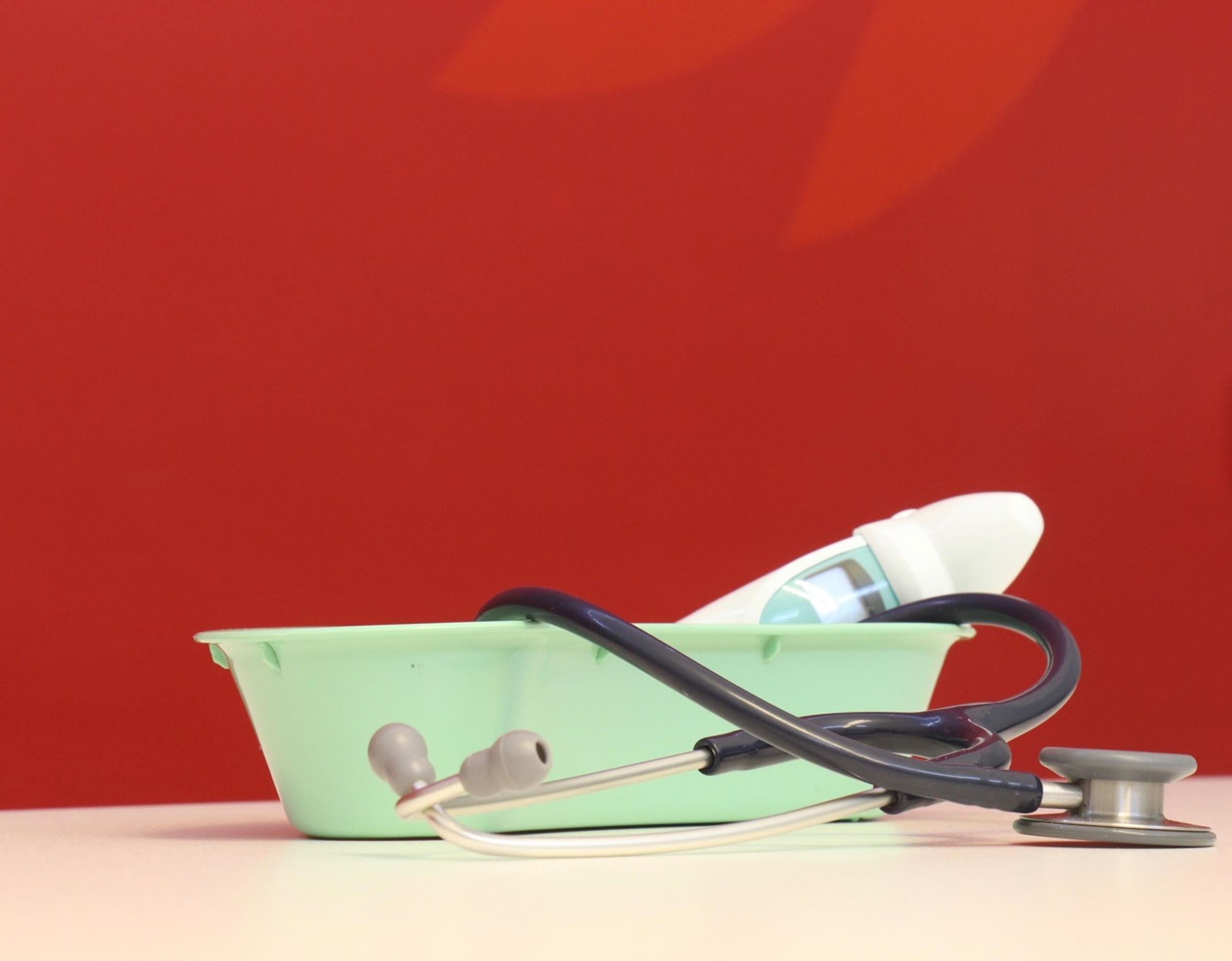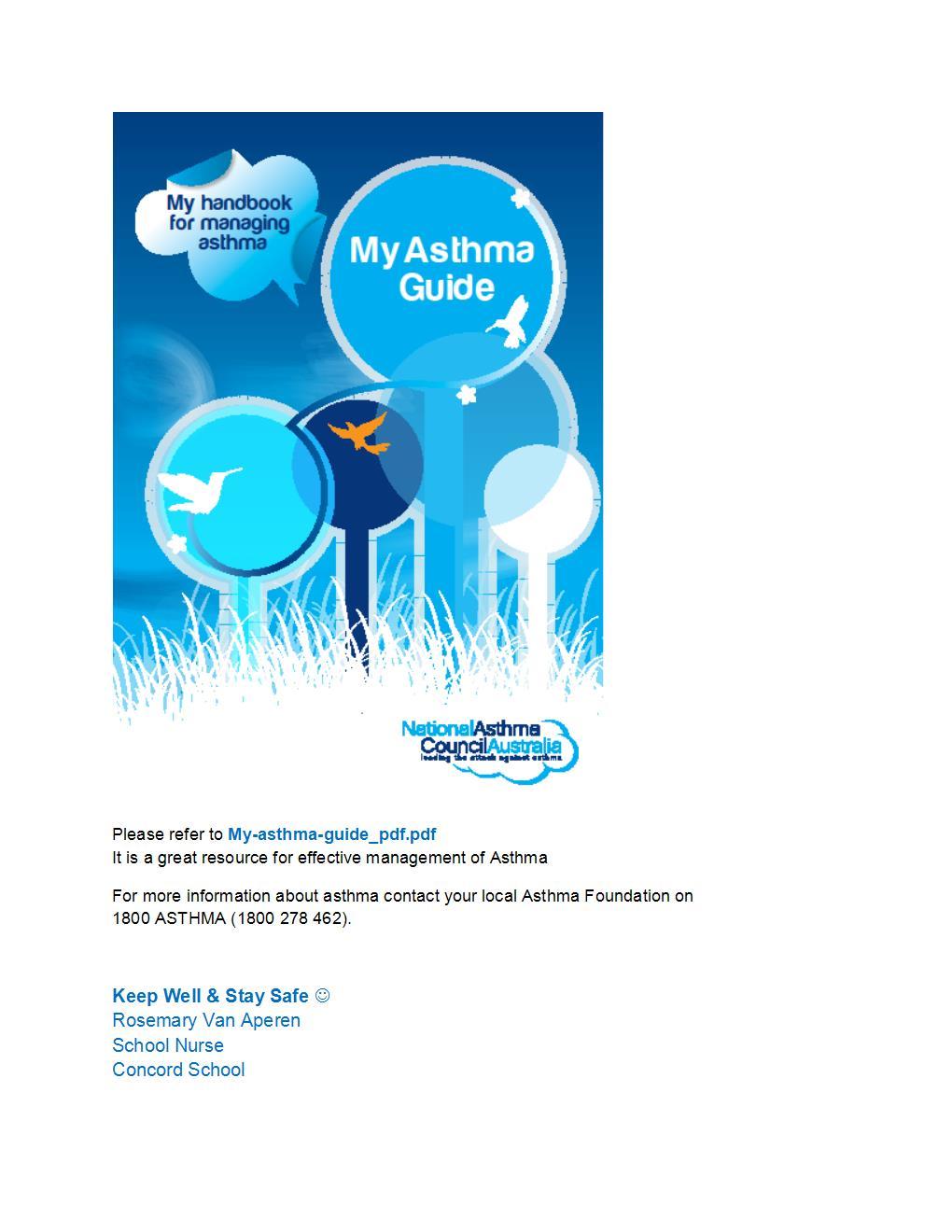School Nurse

National Asthma Week
1st - 7th September
The theme for National Asthma Week 2016 is Become a Better Breather. Research suggests that around 90% of Australians do not use their medications effectively.
Symptoms of Asthma
The most common symptoms of asthma are:
• wheezing – a continuous,high-pitched sound coming from the chest while breathing
• shortness of breath – a feeling of not being able to get enough air
• a feeling of tightness in the chest
• coughing – alongside other symptoms.
You do not need to have all of these symptoms to be diagnosed with asthma.
Asthma Medications
Asthma causes three main changes to the airways inside the lungs, and all these can happen together:
• thin layer of muscle within the wall of an airway can contract to make it tighter and narrower reliever medicines work by relaxing these muscles in the airways
• inside walls of the airways can become swollen, leaving less space inside – preventer medicines work by reducing the inflammation that causes the swelling
• mucus can block the inside of the airways
Preventer medicines also reduce mucus. Children aged 6 years and over may need regular preventer treatment if they need to take their reliever more than twice a week or if they have flare-ups more often than every six weeks. Using a spacer with a puffer makes it easier to take the medicine, and also gets more of the medicine into the lungs so it works better. Generally, using a spacer with a puffer is much better than using a puffer alone. Please view below video for correct technique of using an inhaler with spacer for effective delivery of medication to the lungs.
http://www.thevisualmd.com/read_videoguide/?idu=1083623459
Winter and Spring
Asthma Management in Winter and Spring Asthma is one of the most common chronic childhood conditions, affecting 1 in every 10 children in Australia. Emergency admissions and hospitalisations peak during the winter for children with asthma and flare-ups are often more prevalent during the winter and spring. However, good management can help children with asthma and their carers get through this tricky time of year with more confidence.
Asthma and Hayfever Asthma Week marks the first week of spring and most people with asthma or allergies need to take extra care. Pollens from grasses, weeds or trees can trigger allergic responses, causing asthma and hayfever to flare-up. Asthma and hayfever are closely linked, and approximately 80% of people with asthma also have hayfever. Treating hayfever can help keep asthma under control. Try to avoid allergens known to trigger a student’s hayfever. Corticosteroid nasal sprays are the most effective medicine for persistent hayfever. They need to be taken regularly to work properly. Antihistamine tablets or nasal sprays are the most common choice for people with hayfever. They help to relieve the symptoms such as a runny nose, sneezing, itchy eyes and nasal congestion. Asthma preventer medication should be taken every day, as prescribed to reduce the likelihood of hayfever and asthma flare-ups.
Physical Activity and Asthma Exercise and school sports are a great opportunity for students to participate in healthy team building activities. Though we encourage all students to be physically active and participate in sport, exercise acts as a major trigger in up to 90% of people with asthma. Exercise Induced Bronchoconstriction (EIB) – commonly known as exercise induced asthma – is the temporary narrowing of the lower airways, occurring after vigorous exercise. People with poorly controlled asthma are at a higher risk of EIB due to the sensitive nature of their airways. This may result in episodes of coughing, wheezing, a feeling of chest tightness/discomfort or shortness of breath, often worsening 5-10 minutes after exercise. If this is the case for your child please ensure your child’s doctor includes instructions for the administration of a reliever puffer before exercise in their Asthma Care Plan.
Parents/Carers need to support children with asthma by:
- Providing the school with an updated Asthma Care Plan for their child each year (this is a departmental requirement)
- Keeping the school updated with any changes in their child’s Asthma Management
- Providing the school with their child’s in date Asthma reliever medication, and a spacer for effective delivery of medication.
Please refer to My-asthma-guide_pdf.pdf
It is a great resource for effective management of Asthma
For more information about asthma contact your local Asthma Foundation on 1800 ASTHMA (1800 278 462).
'Keep Well & Stay Safe'
Rosemary Van Aperen
Concord School Nurse

